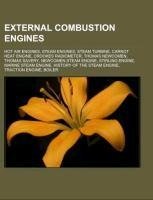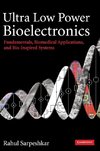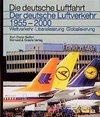
External combustion engines
Source: Wikipedia. Pages: 104. Chapters: Hot air engines, Steam engines, Steam turbine, Carnot heat engine, Crookes radiometer, Thomas Newcomen, Thomas Savery, Newcomen steam engine, Stirling engine, Marine steam engine, History of the steam engine, Traction... Viac o knihe
Produkt je dočasne nedostupný
23.06 €
bežná cena: 26.20 €
O knihe
Source: Wikipedia. Pages: 104. Chapters: Hot air engines, Steam engines, Steam turbine, Carnot heat engine, Crookes radiometer, Thomas Newcomen, Thomas Savery, Newcomen steam engine, Stirling engine, Marine steam engine, History of the steam engine, Traction engine, Boiler, Compound locomotive, Applications of the Stirling engine, Corliss steam engine, Compound engine, Portable engine, Advanced steam technology, Thermoacoustic hot air engine, 5AT Advanced Technology Steam Locomotive, Rijke tube, Valve gear, Beam engine, Crower six stroke, Blowing engine, Cornish engine, Uniflow steam engine, Aeolipile, Creusot steam hammer, Stationary steam engine, Giovanni Branca, Thermomechanical generator, Still engine, Model steam engine, Holcroft valve gear, Smethwick Engine, Oscillating cylinder steam engine, Fluidyne engine, Stuffing box, External combustion engine, Pittsburgh Steam Engine Company, Minto wheel, Stoddard engine, Malone engine, Elbow engine, Compounding pressure, Photo-Carnot engine, John Calley, Lean's Engine Reporter, Trip valve gear, Gaar-Scott, Double-acting cylinder, Guardian valve, Saturated fluid, Expansion valve, Single-acting cylinder. Excerpt: A Stirling engine is a heat engine operating by cyclic compression and expansion of air or other gas, the working fluid, at different temperature levels such that there is a net conversion of heat energy to mechanical work. Like the steam engine, the Stirling engine is traditionally classified as an external combustion engine, as all heat transfers to and from the working fluid take place through the engine wall. This contrasts with an internal combustion engine where heat input is by combustion of a fuel within the body of the working fluid. Unlike a steam engine's (or more generally a Rankine cycle engine's) usage of a working fluid in both its liquid and gaseous phases, the Stirling engine encloses a fixed quantity of permanently gaseous fluid such as air. Typical of heat engines, the general cycle consists of compressing cool gas, heating the gas, expanding the hot gas, and finally cooling the gas before repeating the cycle. The efficiency of the process is narrowly restricted by the efficiency of the Carnot cycle, which depends on the temperature difference between the hot and cold reservoir. Originally conceived in 1816 as an industrial prime mover to rival the steam engine, its practical use was largely confined to low-power domestic applications for over a century. The Stirling engine is noted for its high efficiency compared to steam engines, quiet operation, and the ease with which it can use almost any heat source. This compatibility with alternative and renewable energy sources has become increasingly significant as the price of conventional fuels rises, and also in light of concerns such as peak oil and climate change. This engine is currently exciting interest as the core component of micro combined heat and power (CHP) units, in which it is more efficient and safer than a comparable steam engine. Robert Stirling was the Scottish inventor of the first practical example of a closed cycle air engine in 1816, and it was suggested by Fleeming Jenkin as ear
- Vydavateľstvo: Books LLC, Reference Series
- Formát: Paperback
- Jazyk:
- ISBN: 9781156680285


 Anglický jazyk
Anglický jazyk 







 Nemecký jazyk
Nemecký jazyk 